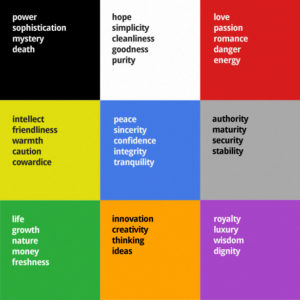The content for your digital signage network is most effective when displayed at the location for its intended audience, as well as at the right time. The right message at the right place, at the right time to reach the target audience. It’s such a simple statement to make and it sounds so clear on paper. But figuring out the ideal place and time for your message is no small task.
Understanding how your target audience thinks, what they go through on a day-to-day basis, and what sort of content drives them to act will help you in the content creation process. It will direct you to deploy the content in such a way that your audience will pay attention and act on your message. Let’s dive into some insights on this matter to point you in the right direction and help answer these questions.
Emotional versus objective content
These are two main ways ads and outdoor content influence the viewer.
Emotional content focuses on sensation over function. Luxury items, clothing, perfume, or cars typically have ads intended to evoke a strong sensation in the viewer. The goal of any fashion model is to convince the viewer they’ll look and feel as good as the model does if they buy what she is wearing. This is also why car ads are more stylish than matter-of-factly technical.
Objective content is more frequently used for essential and functional products, groceries, supplies, and household appliances, for instance. Most people thinking of buying a washing machine or hygiene products will make choices based on quality and function rather than any luxury or visual appeal of the ad.
It is important to note that certain demographics respond differently to both types of content. Research suggests most audiences, in particular younger ones, respond in a way much like the one just described: Emotional content for luxury items, objective content for functional items. Older audiences, on the other hand, respond more to objective content in both fields.
Knowing this, adjust the placement of ads and their timing based on the demographic exposed to it. Billboards and digital displays shown to younger audiences at a specific time of day are well advised to rather use ad types the younger demographic is more responsive to.
Establishing a balanced schedule of emotional and objective types of content can make a difference respective to the target audience viewing it.
The meaning of colors
While color isn’t a message per se, it carries meaning. Using it cleverly in your content can evoke a specific emotion and sensation in the viewer. A good example can be seen in similar uses of color in advertising and in company logos. You’ll often find green with content that promotes health, nature, or freshness. Red is a more passionate color ideal for a message that aims to make a strong impact, as it’s highly alerting.
Understanding which color scheme does what can help you evoke a desired feeling in the viewer. It also elevates the visual appeal of your message. Be mindful of the location and background of the content, though. You don’t want it to blend in too much lest people ignore it. If that happens, no matter the thought and color preparation put into, the message will not convey.
We ignore a lot in our daily lives
Be mindful of the amount of content your target audience sees daily. Each day we all face hundreds, if not thousands, of messages outdoors. These include advertising but also many other things like walking, traffic, stop lights, etc. In order to function optimally, we’ve learned to make biased judgments about our surroundings without directly thinking about them, and our minds blank out the noise. Ads that demand no particular attention or are of no value we simply ignore.
For content creators, this presents a challenge. How do you create a message that will stand out in the crowd and not be ignored by these biased snap decisions? Apart from designing content that attracts attention and makes the viewer look and think, establishing a rich content rotation on a billboard or display can help. By displaying content relevant to the viewer, the display itself bypasses these biased filters and becomes relevant. If you’ve seen an ad on a billboard today so interesting that you told five people about it, you’ll likely take a look at that same billboard tomorrow.
Our attention span got shorter
Microsoft published a study that showed the average human attention span in 2000 was 12 seconds. In 2013, this number dropped to 8 seconds, and rightfully so. We are exposed to more stimuli than ever. Thus, it stands to reason why we’re spending less time analyzing each one.
Online ads are a great example to examine human behavior and this attention span in action. Typically, the unskippable part of ads lasts 5 seconds. The vast majority of us will skip the ad once this window expires. Of course, this skip won’t happen if the ad has proven worthy of our attention in that time. If it hasn’t, if the critical part of the ad happens later in the spot, it’s like the proverbial tree falling in the woods. If nobody watches long enough, does it really have a message? Those first few seconds are critical. Wasting them with a dull and boring introduction is a mistake.
Outdoors, having an ad or any piece of content that takes too long to build up is wasting the viewer’s time. Avoid these empty moments in your content at all costs. If they do exist, identify them in your existing content and eliminate them.
The attention span of your target audience is short. Every second counts!
We’ve only scratched the surface to help you understand how to motivate your target audience with your content. To dig deeper, read up on targeted messaging with specific examples of its use which will surely spark a few ideas. Another important factor is tracking the data you collect. It helps you see how effective your content is at reaching your target audience. It can also let you know if you need to redesign your message. Tracking analytics will ensure you’re moving in the right direction!










